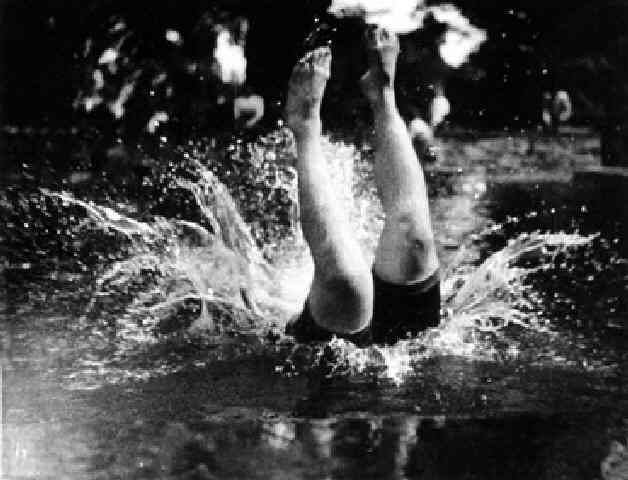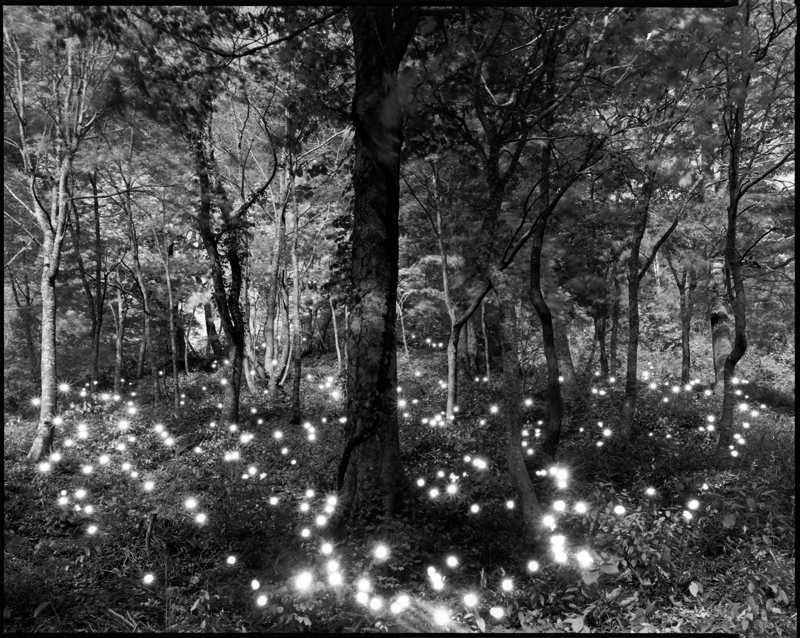Casper David Friedrich 'Sea of Ice' 1824
Physical collisions, whether intentional or accidental, can provide artists with spectacular visual reference material. Casper David Friedrich exploits the incredible forms created by masses of ice colliding.
The triangular forms of the ice are reminiscent of the the forms used in Supremacist painting by Malevich.Casper David Friedrich 'Monk by the Sea' 1808 - 1810
Friedrich often looked to nature. In this work The sea collides with the land and a lone figure gazes out at an expanse of sea. Most of us have gazed out to sea and gained a sense of the vastness of the world, of the universe - this is the sublime. Casper David Friedrich breaks the whole world down to three elements - the blank foreground of land (earth), the blackish murky sea (water) and the vast empty bruise like sky (Air). It is almost abstract if seen through half closed eyes. It could be a late period Rothko with the same elements of bleakness and emptiness.
This is a late period Rothko, created a year before the artist committed suicide. It displays the dark colour palette the artist primarily used during his last years of life, a period that was said to be increasingly lonely and isolating for the artist. Rothko's earlier work is much more colourful - the colours affect you on a visceral level.
Clifford Ross - from the 'Hurricane' series
Clifford Ross also explores where land collides with the sea. Water is transformed into a stationary solid form and has been frozen in time. The rich black obliterates the sea and sky creating a solid area of negative space to contrast with the white textured area. Ross' images seem to be a heightened form of the real world - these are waves but they seem to be perfect solid waves.
In this image Jacques-Henri Lartigue captures the moment a figure collides with the water and conveys a remarkable sense of speed and motion.
In 1911 Jacques-Henri Lartigue was not merely as unprejudiced as a child: he was a child. The picture reproduced here was made when Lartigue was fifteen, but it was not one of his early works - by the time he was ten he was making photographs that anticipate the best small-camera work of a generation later.
His early images show a world about to disappear - the old world being over taken by machines and the onset of the horrors of the first world war.
In 1911 Jacques-Henri Lartigue was not merely as unprejudiced as a child: he was a child. The picture reproduced here was made when Lartigue was fifteen, but it was not one of his early works - by the time he was ten he was making photographs that anticipate the best small-camera work of a generation later.
His early images show a world about to disappear - the old world being over taken by machines and the onset of the horrors of the first world war.
Harold Edgerton was a pioneer of high speed photography. Often the best images involved movement - with one things colliding with another.
Photography is, in many ways, where art and science meet and these images show Edgerton’s experiments with high speed photography. The top image shows a drop of milk landing onto of a red biscuit tin lid – creating a beautiful crown. The bold white contrasts against the rich red and the rim of the lid adds an unusual horizon line to the composition. This is one of Edgerton’s most famous images and is actually the result of years of experimenting. He produced many of these images and many were not successful. This image is the result of experimentation and dedication. A flash would have been used to capture this moment in time.
The image on the bottom was created by having the camera on a tripod and using a slow shutter speed. However, Edgerton used a strobe light – each time it flashed it captured the figure in mid movement.
Photography is, in many ways, where art and science meet and these images show Edgerton’s experiments with high speed photography. The top image shows a drop of milk landing onto of a red biscuit tin lid – creating a beautiful crown. The bold white contrasts against the rich red and the rim of the lid adds an unusual horizon line to the composition. This is one of Edgerton’s most famous images and is actually the result of years of experimenting. He produced many of these images and many were not successful. This image is the result of experimentation and dedication. A flash would have been used to capture this moment in time.
The image on the bottom was created by having the camera on a tripod and using a slow shutter speed. However, Edgerton used a strobe light – each time it flashed it captured the figure in mid movement.
This image above is called 'Autumn Rhythm' (1950) by Jackson Pollock. The drips and spills reflect the actions of the artist as he moves around the canvas - or where the artist collides with the canvas. These 'Action Paintings' are like Steinert's light experiments - expressive marks documenting a persons movement through time and space
.

Wolfgang Tillmans Freischwimmer photographs share the same visual quality with Pollock and Steinert. He created the works in this series without a camera and they are the result of light being exposed to colour light sensitive paper. They seem fluid and flow like hair - their abstract nature clash with his other work.
These abstract images by Steinert seem to reflect the work of the abstract expressionists taking place in America during the 1940's and 1950's
.


This image is of Picasso taking ‘a line for a walk’ (see the work of Paul Klee). The image is by the photographer Gjon Mili. The Camera was placed on Tripod to keep it steady and set to the B ‘Bulb’ setting (On this setting the shutter will stay open for as long as you press the shutter down). A Cable release was probably used so the photographer’s finger didn’t shake the camera.
Picasso had a small torch that he used to draw his trade mark Minotaur/Bull figure – a reference to the bull fighters of Spain. As the light from the torch moved it projected through the lens and onto the negative, accumulating on the film – creating lines only visible by the camera.
If you have an ipod/iphone try Light Painting to create a photographic light painting. While standard flashlights and LED lights work fine, this app offers additional light features otherwise hard to replicate. Use these tips and tricks to get started.
Photodynamism was the use of photography to capture the movement through time and space and used photography’s natural ability to capture time passing through a lens. Key artist - Anton Giulio Bragaglia. Recognized for his playful interaction of light, Tokihiro Sato uses a large-format camera for exposures that last from one to three hours, while he moves through the space creating points of light or illuminated lines drawn with flashlights or flashes made by reflecting mirrors. The results are detailed photographs interrupted by patterns of light. And because of the long exposures, Sato’s movements across the scene remain undetectable by the camera; the photograph captures his presence but not his image




















